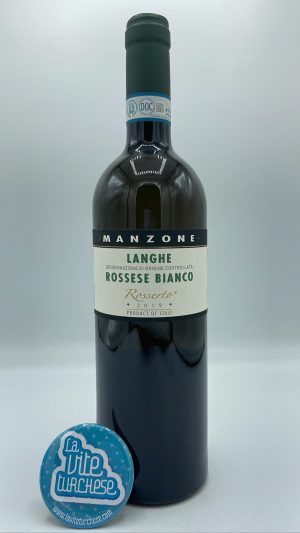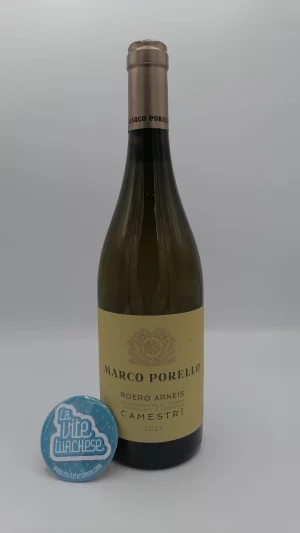Giovanni Almondo – Langhe Bianco Sassi e Sabbia – 2021
One of the white grape varieties grown by the winery, a pure Riesling that has found in these areas the right conditions to have good aromatic expression. Young vines (clones from Alsace and Moselle) about 20 years old planted on sandy soils rich in gypsum and stones, good altitude and excellent excursions between day and night: grapes that are cold macerated for about 12 hours to be later aged in cement for 8 months. Great bottle, unusual for the area with a powerful aromatic profile, on the palate it is soft but with good balance in which acidity and flavor remain balanced until the end.
- Producer: Almondo Giovanni
- Name: Langhe Bianco Sassi e Sabbia
- Grape Variety: 100% Riesling
- Vintage: 2021
- Alcohol Content: 12,5%
- Bottle Size: 750ml
- Production:
Productive Notes: vinification in steel tanks. Aging in cement tanks for 8 months.
Wine naturally contains solphites
20,00€
Out of stock
Description
When we talk about the Almondo family, we mention one of the most memorable wineries in the Roero area for producing wines of incredible elegance. The winery is located in Montà in the northern part of the region with 18 hectares of property, they have always resided there but their business officially began in 1978 after Domenico Almondo at the urging of his father Giovanni finished his oenological studies in Alba to devote himself to viticulture. Right from the start they focused on growing the local Arneis and Nebbiolo grapes trying to take the quality of the wines to a higher level, among the first to make vineyard selection by naming the various plots and selecting the best clones even today. Carried on now also by their son Federico, they are still one of the very few family businesses where all work is done only by them from the vineyard to the winery. A vision aimed at continuous improvement, eco-sustainable methods in the vineyards with selection of the clusters while in the winemaking they experiment with new techniques such as the use of inert gas during the processes, management of reductions and the permanence of fine lees in the wines and good use of wood in the ageing processes.
You may also like…
-
Out of stock
-
Out of stock





